Even if you don’t have a teenager of driving age, you travel on the same roads where teenagers drive. According to the National Highway Traffic Safety Administration, teenagers are three times more likely to have an accident than drivers over twenty, so improving teenage driving should be of critical interest to you.

Adult Car Control programs run concurrently with the Teen School on different parts of the Performance Center facilities.
Fortunately, it’s not just of interest to you. While drivers’ education programs are commonplace throughout the country, programs like the Tire Rack Street Survival and the Teen Schools at the BMW Performance Centers aim to improve teen driving beyond just teaching the rules and laws. We all see many experienced adult drivers who certainly could improve their own driving, so it’s pretty straight forward to suggest new-to-driving teens need more than the requisite drivers’ education program, too.
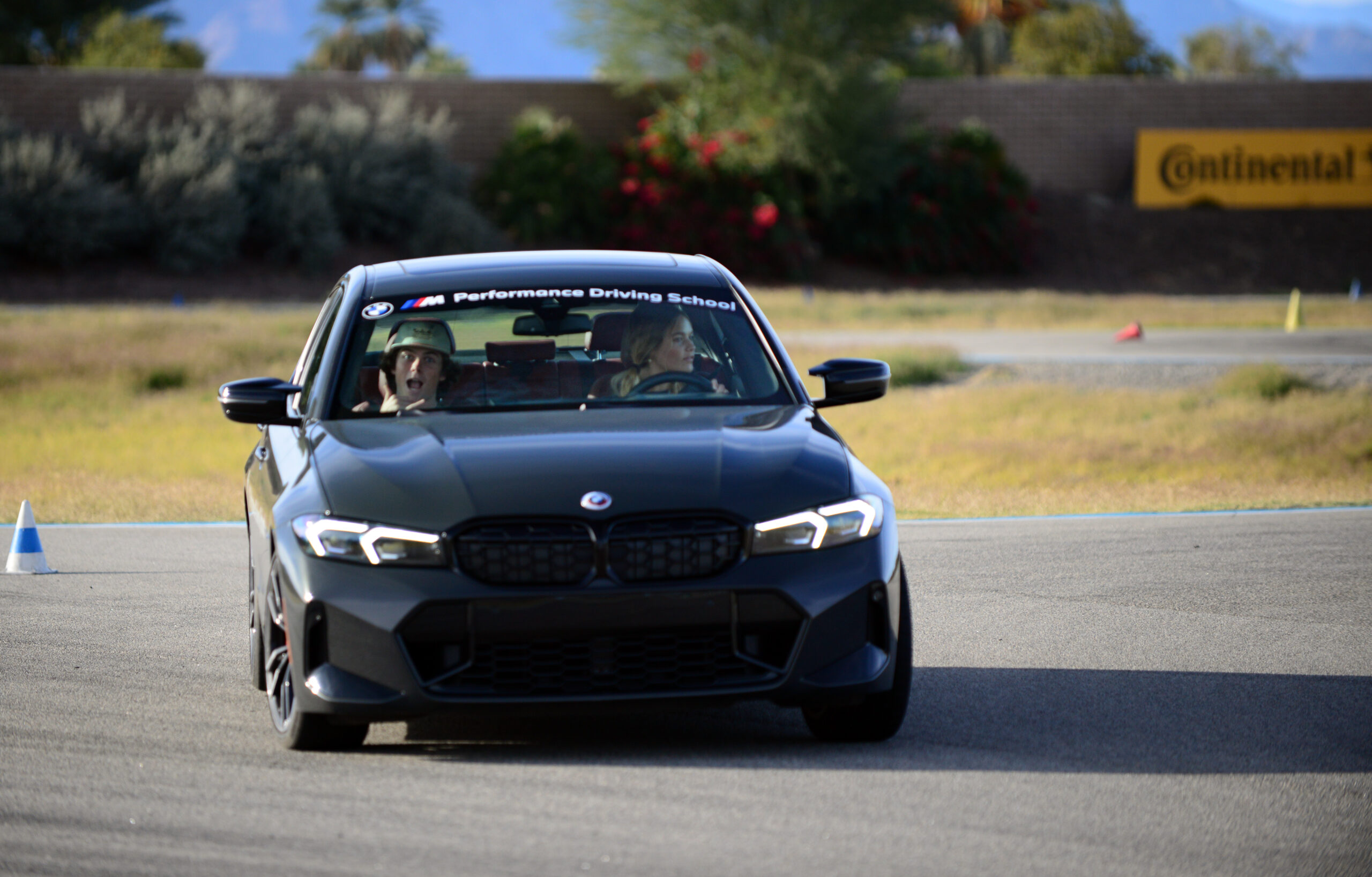
Daughter Cadence demonstrates how to use the side windows effectively while her boyfriend Owen Burdian demonstrates his enthusiasm (and says hi).
My younger daughter and her boyfriend just completed the Teen School at the BMW Performance Center. It was an eight-hour program on a Sunday surrounded by two-hour commutes both ways, wrapping up their Thanksgiving break. If you think it’s tough to convince teenagers to take that time when they already have their licenses, well, you’re not wrong. “Not going to lie, I didn’t want to go,” my daughter Cadence (“Cado”) admitted afterward. “I’m very surprised. I was dreading going to this, mostly because I wanted to be doing other things, but also, I was a little anxious about what it was going to be like. I was expecting myself to be slow, like how I am in the go-karts at K1 Speed, but then I became more confident and had fun the whole day.”
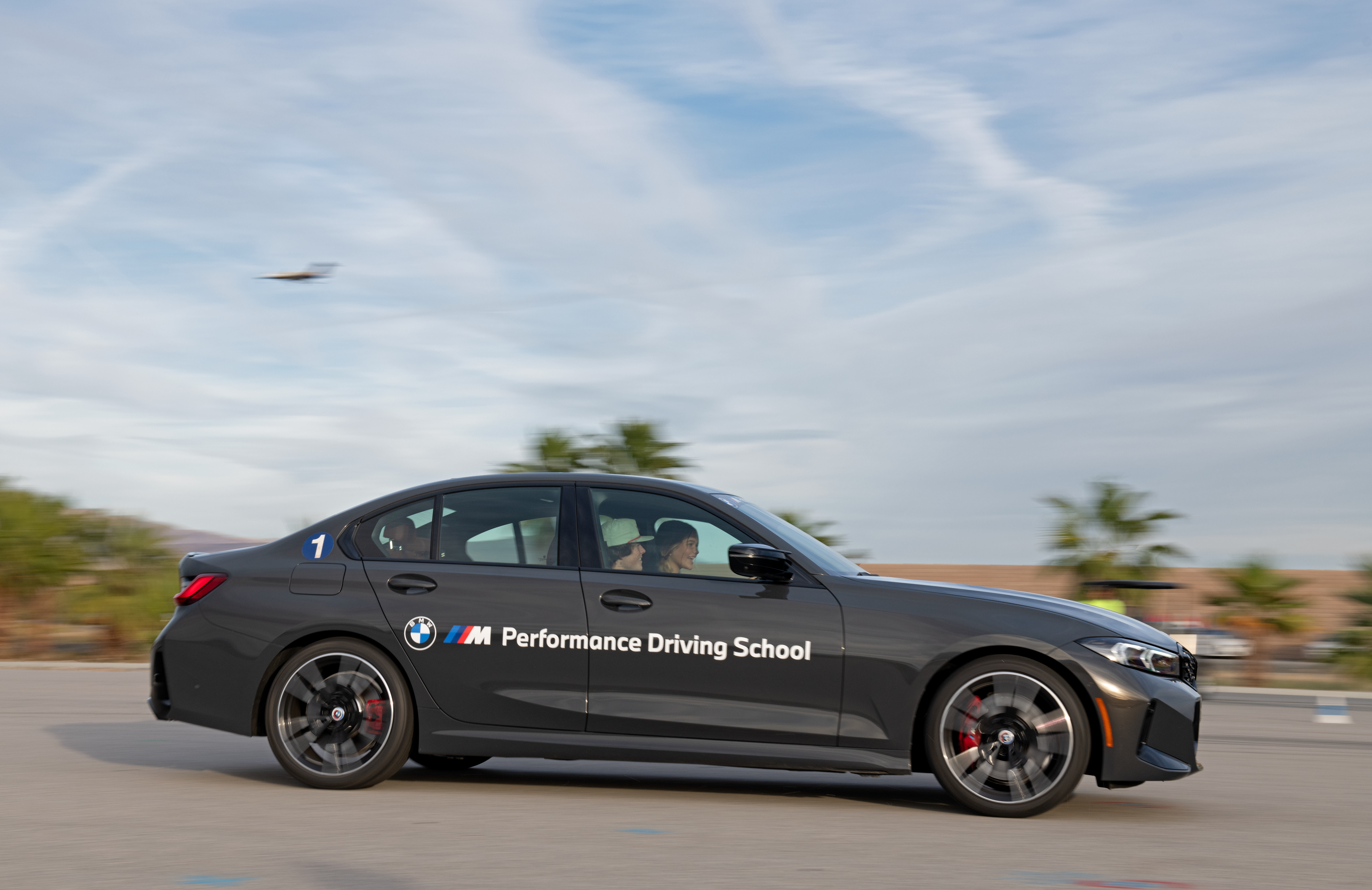
Students might not have felt it ahead of the program, but they were definitely in for a day of fun as well as learning.
Before we continue to follow Cado and Owen’s experiences at the Performance Center, if you’re thinking, “But what about the Tire Rack Street Survival Program?”, that is also an incredible program and I highly recommend it. My older daughter participated in a Tire Rack Street Survival program and credits what she learned there for helping her survive being flipped three times off the freeway at speed. Find a Street Survival class near you or request one at streetsurvival.org. It’s a great program; this column is about the Performance Center’s Teen School.

The instructors really do a great job of engaging the students right from the beginning.
The day starts with about 30 minutes in a classroom. They aim for eight to twelve students with around three instructors for that sized group. This class had eight participants, some traveling as far as from Seattle, Washington to the Performance Center in Thermal, California. Getting back to our resident cynic, Cado concedes, “At first, I was thinking, ‘We have to sit in a classroom? I’m going to hate this.’ But right away, the way they teach, with visuals and connections to relatable situations, it helped make it interesting and make sense.”

Instructor Rick Porter shows Cado some tips on hand positioning and more.
I knew the instructors were great with adults, but they were equally as impressive with teenagers. It takes an art to encourage, support, challenge, and respect a group of teens (or anyone, really), especially at 8:30 in the morning on a Sunday. Consider Rick Porter, Bryan Randall, and Courtney Crone to be artists then.
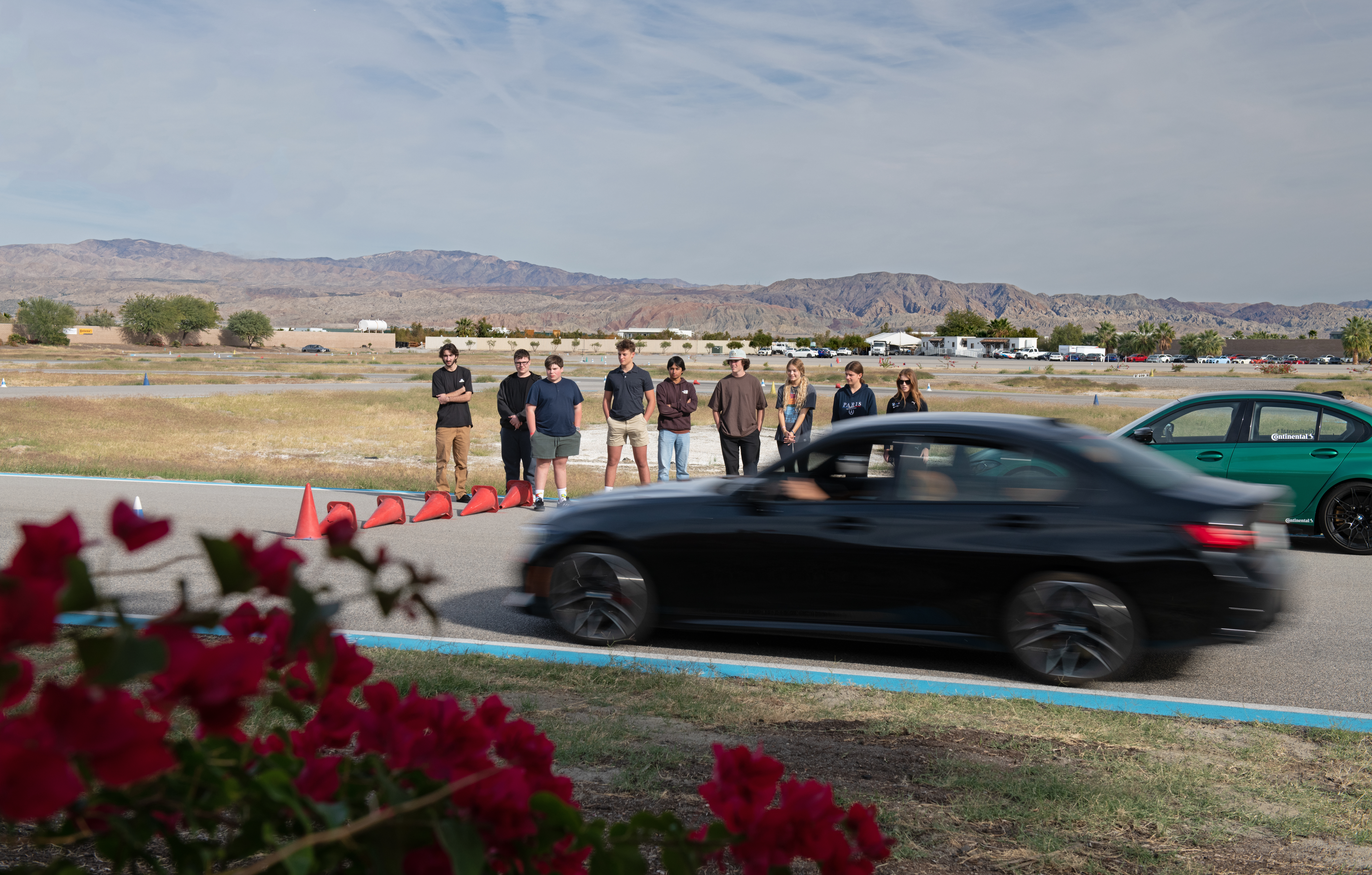
Instructor Bryan Randall enters the braking zone while instructor Courtney Crone watches on with the students.
“The instructors were engaging and supportive from the beginning,” Owen praises. “The instructors were encouraging us, even when we didn’t get something right. They weren’t rude or patronizing. You could tell they were genuinely there for us.”

Instructor Rick Porter glides through the skid pad at the BMW CCA LA Chapter program in October.
He wasn’t imagining that. “I really feel that the Teen Program is the most rewarding program we do out at PC West,” adds Bryan Randall, BMW Performance Center Driving Instructor. “You could also make the argument that it’s the most important. Here we’re able to get students (young drivers) before they’ve had any real chance to develop bad driving habits. From the very beginning, we’re able to help them confidently institute proper driving technique and deeply instill in them the importance of safety first as well as understanding the role and responsibility they take on in the operation of their vehicle.”
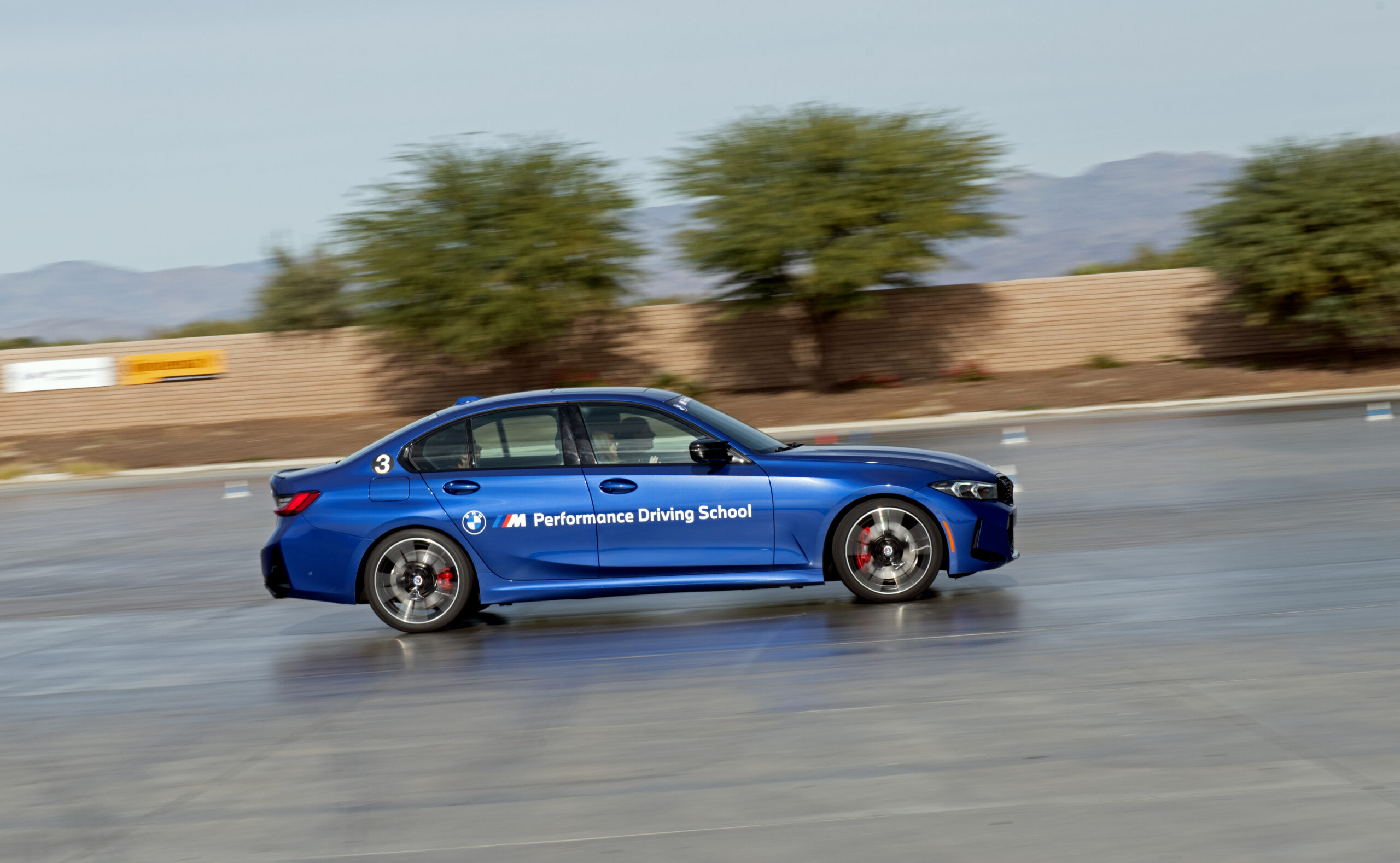
It’s not too bad when you get to be driven around the skid pad by instructor and accomplished race car driver Courtney Crone.
I’ve seen Randall create a great experience for adults in other Performance Center programs, but he, along with Porter and Crone, were just as adept at getting the students in this program engaged early. “We also want to make this fun,” Randall continues. “Yes, they’re learning and that part’s paramount, but people seem to learn more when they’re having a good time.”
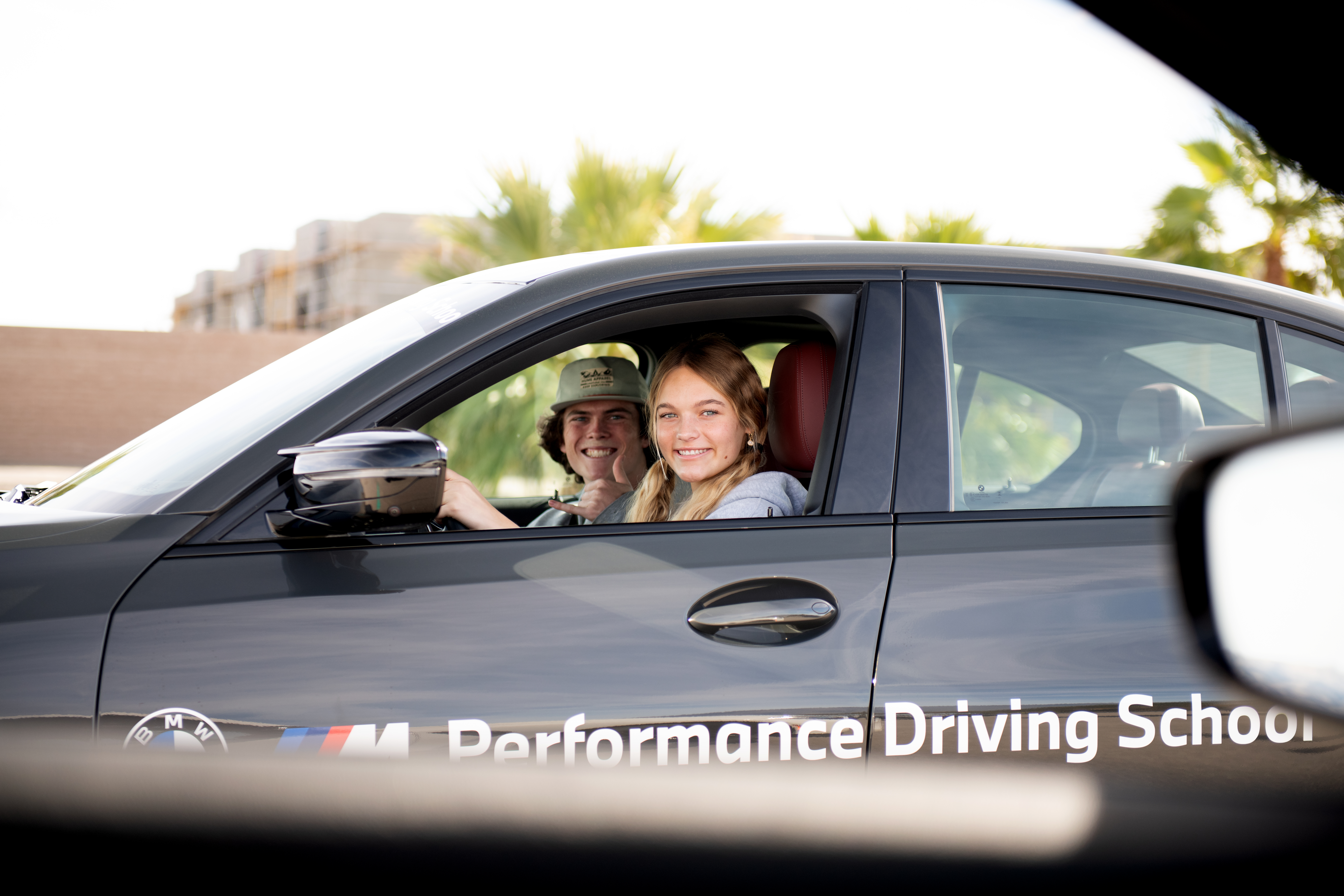
Smiles increased commensurate with confidence and comfort.
That is exactly how the program evolved for the participants. “At first, I wasn’t comfortable but then as we went on even in each activity, I became less nervous and started having fun,” Cado says. “I could tell I was improving. The instructors made the environment comfortable and did a good job of showing us how to adjust to really become better drivers.”

Owen definitely enjoyed getting into the G20 M340i, especially here on the skidpad.
Owen initially might have wanted to be elsewhere, but as the daily driver of a tuned Ford Focus ST, he was looking forward to driving some quality BMWs, too. “I’ve known BMW M cars are known for their power, but it was cool to see these cars and see how well they handle. The M340i cars that we were in were really impressive all around.”

We have a few cars but driving something as modern and powerful as the M340i was a new experience for my daughter.
Cado echoed that sentiment. “Ok, I want a BMW now,” she says. “It was pretty cool that they’re just giving these nice cars to teenagers for the day. The cars are really nice and in perfect condition.”
(Quick bounce back to the Tire Rack Street Survival Program, since I know some of you are thinking it. I don’t present these as a “which is better” aspect, especially since I recommend teens attend both of these programs. In the Street Survival program, students drive their own cars, giving them specific understanding of how to handle and control the car they will be driving.)
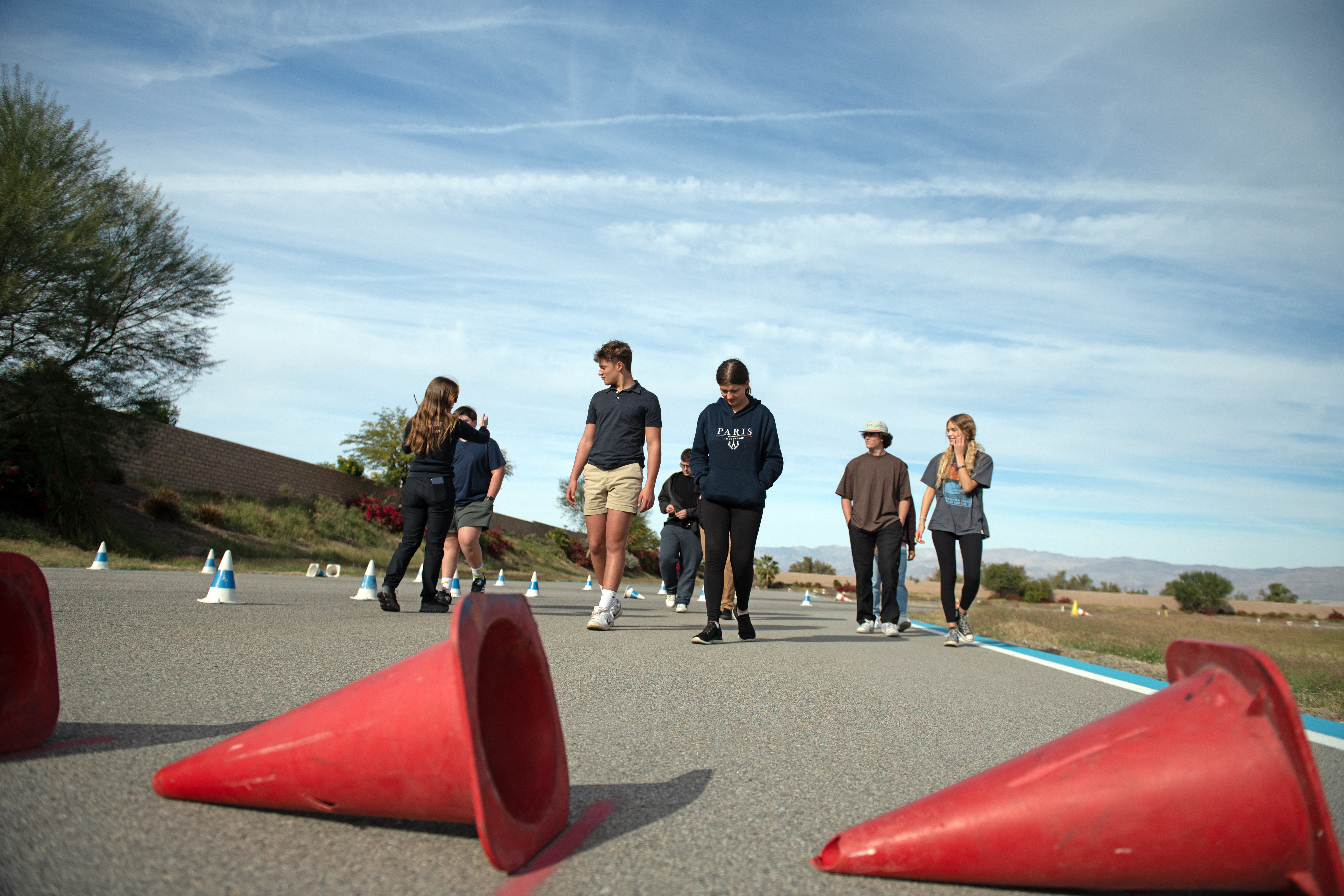
Instructor Courtney Crone walks the students through the course before getting back in the cars.
The Performance Center Teen School includes activities like the slalom, skidpad, braking exercises, emergency lane changes, and culminating with a Point Run Challenge to put it all together. The website says, “Driving should always be fun, and with a firm grasp of the basics, it can be. Our driving experience for teenagers isn’t for practicing parallel parking and taking left turns; it’s to add skills that unlock total car control at the limit and make your teen a better-equipped driver.”
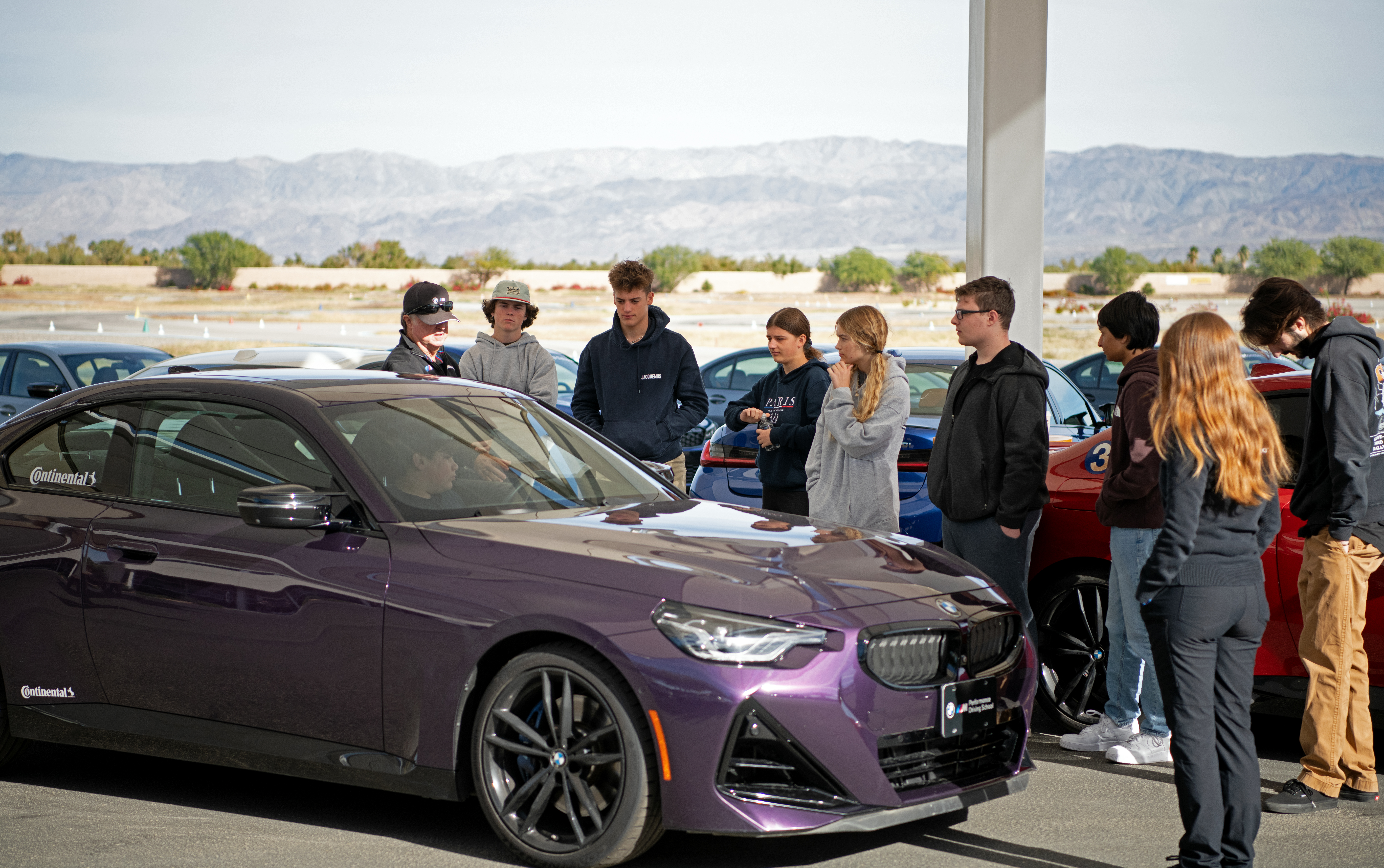
After the classroom instruction, the students get a quick tutorial on the features of the cars.
“This one-day class focuses on how a driver’s behavior affects a car. Teens will learn how to panic brake to avoid obstacles, execute emergency lane change maneuvers and in a real wake-up call, attempt to drive while distracted. In the end, students will put it all together on our Teen Challenge Course. Expect lots of laughs and some Insta-worthy moments.”

Cado cited pairing up as one aspect that made her more comfortable. We’re sure it had nothing to do with spending the day with her boyfriend.
Students pair up and take turns behind the wheel. For some activities, they ride with the instructors before giving it a go themselves. Students have walkie talkies in their cars to listen to continuing instruction and direction. I was impressed with how the instructors coach the students. In one instance, a participant, newer to driving, was having trouble maintaining speed along the course. After countless attempts to encourage the student, the instructor said to me, “If she leaves here and can’t accelerate confidently, how will she get on the freeway safely?” Sure enough, within a few more laps, his coaching hit the right buttons and the student showed marked improvement as cheers from all the instructors poured over the radios as loud as her new smile was wide.
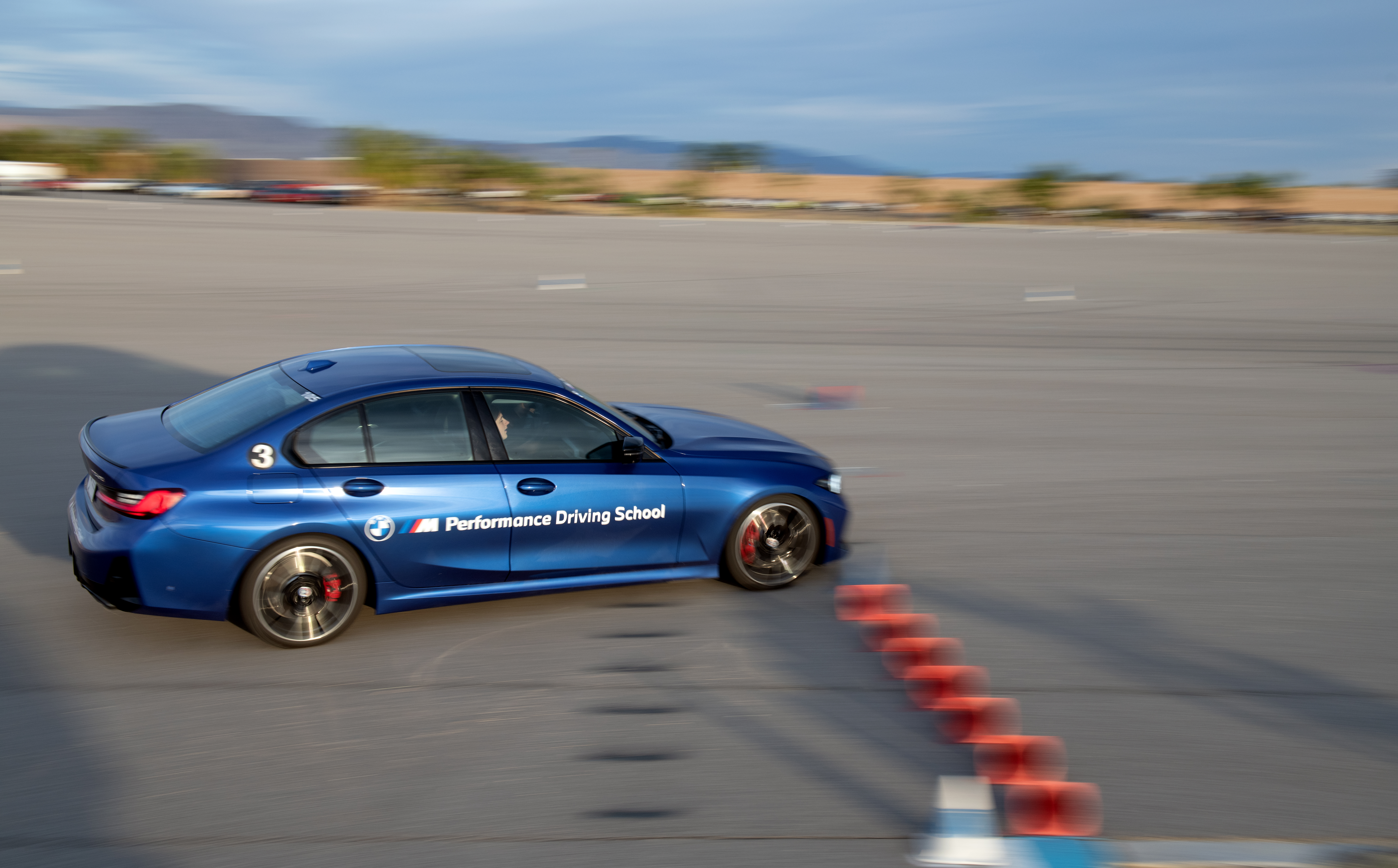
The evasive maneuvering portion of the program really expanded students’ understanding of how to control a car.
Similar to an adult car control course or M School there, students found different activities to be their favorites of the day. “I thought I would hate the braking exercise but that ended up being my favorite,” Cado says. “I had no idea the car could stop that quickly. They start us out at 20 or 30 miles per hour and then we get up to 50 and still have to stop in the same short space. At first it seems impossible and then we’re doing it. I could feel the difference with engaging ABS. Most times when I brake, even in a hurried way, I don’t press them that hard. It’s good to know we can stop even more quickly like that. I also liked the skid pad. It was a weird feeling at first, but then really cool that we could figure out how to regain control of the car like that.”
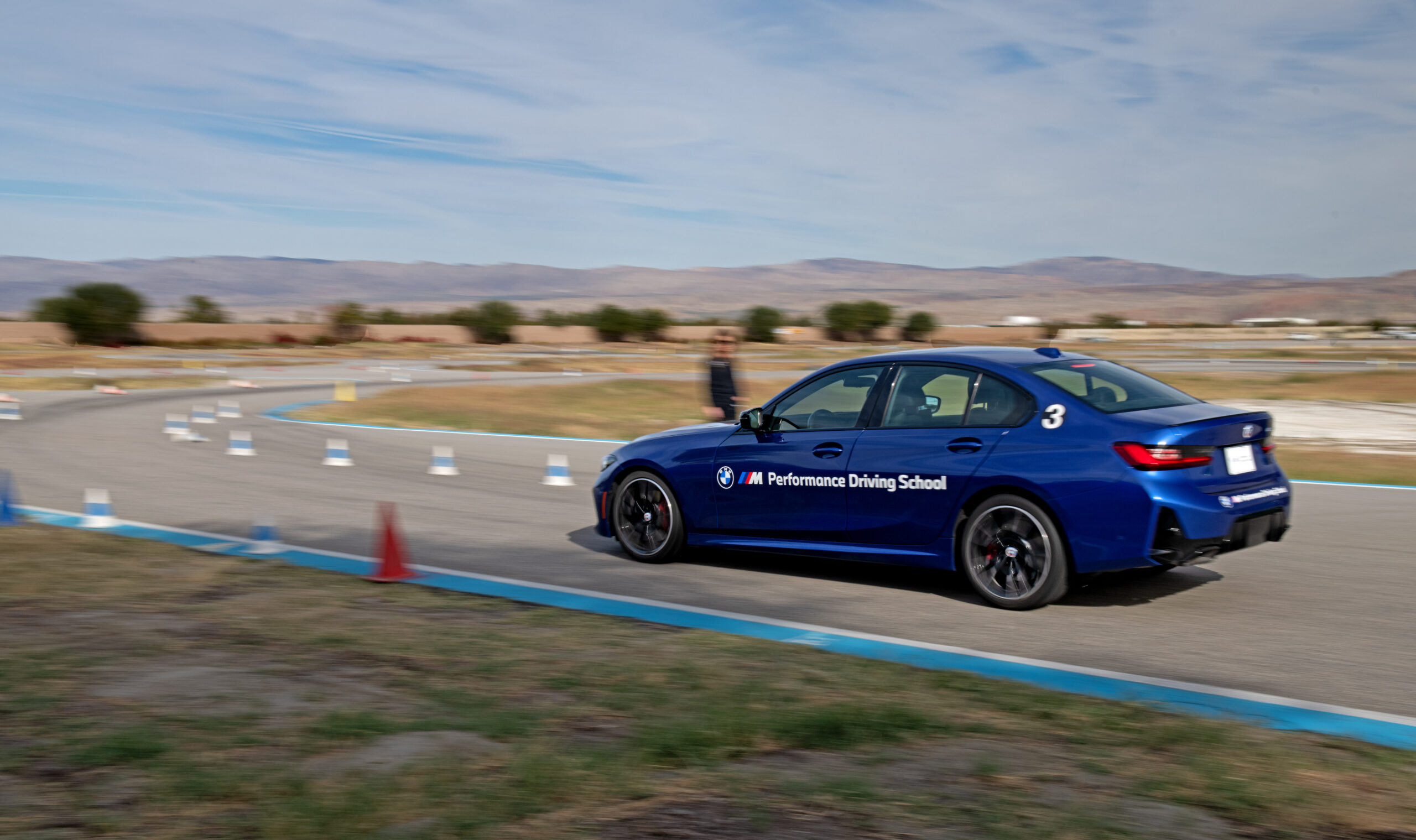
Students also learned about braking and turning.
Owen had similar thoughts but also counted the emergency lane change as a highlight of a fun day. “The skid pad was my favorite, but the fast lane change activity was really fun,” he says. “That showed us how the car reacts with how much we turn the wheel even going fast, but it also showed us how we really need to be paying attention at all times to do that successfully. On the skid pad, you could really tell how traction control impacts control. We also learned how to remain calm if we lose control and not to freak out. They really taught us well how to regain and maintain control of the car.”

Instructor Bryan Randall demonstrates hand positioning.
It seemed all the students were intrigued to hear the tips from the morning session and then put them into practice in the exercises. “They emphasized the ‘nine and three’ hands position and it made even more sense throughout the day,” Owen says. “For some reason, our drivers’ education instructors told us ‘ten and two.’ It wasn’t even 8:45 and we had already learned something new. I had also never realized that our hands (and therefore the car) go where our eyes go, so the way they taught us to look ahead and use all our windows was important. At first, we were all looking right in front of our cars and our reactions were limited. By the end of the day, we were looking further ahead and using our side windows as we turned, gaining more control of the car.”

Some of the exercises seemed daunting initially but developed skills students are still applying after the program.
Three weeks after the program, I asked both Cado and Owen if they were applying anything they had learned to their daily driving. “The eyes ahead—that’s been super helpful,” Cado confirms. “Also, how to adjust my mirrors helped. That was the first thing I did when I got back in my car and it’s amazing how much more I can see. It really does limit the blind spots. I keep my eyes up and can tell I’m more comfortable in my car.”

By the end of the day, students were quite familiar with the powerful M340i cars
Owen echoed those benefits. “The mirrors, hand position, and seating position are all making a difference for me,” he says. “I’m more comfortable in the car and not driving like a rigid stick figure. I’m glad I haven’t had to apply what we learned in emergency maneuvers but I’m sure I’ll be more prepared if something happens.”

Smiles, skills, and capabilities grew throughout the day.
Both Cado and Owen confirmed the program exceeded their expectations. The instructors said at the beginning they want to make the program safe, fun, exciting, and educational. The students’ confidence and abilities improved all day. That was perhaps only surpassed by their growing smiles, owed to their sense of accomplishment as much to the exceptional way the instructors managed the program.

Practice makes (more) comfort in the Teen School.
Check out bmwperformancecenter.com for more information on courses for teens (and adults!). For teens, they must be at least fifteen years old and have a valid permit. Also, remember your BMW CCA membership is good for a fifteen percent discount. And while you’re looking for programs for your teen, look up Tire Rack Street Survival, too. There isn’t a limit to how much any of us can continue to improve. —Kyle van Hoften





















